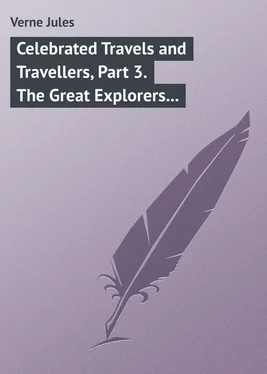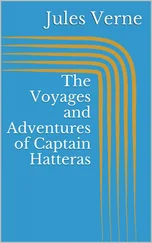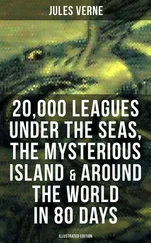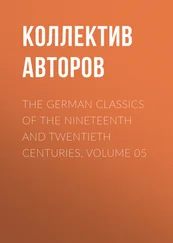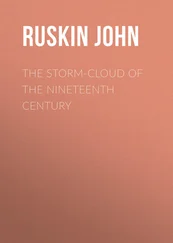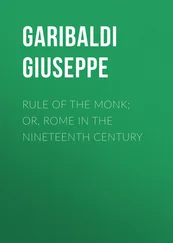Jules Verne - Celebrated Travels and Travellers, Part 3. The Great Explorers of the Nineteenth Century
Здесь есть возможность читать онлайн «Jules Verne - Celebrated Travels and Travellers, Part 3. The Great Explorers of the Nineteenth Century» — ознакомительный отрывок электронной книги совершенно бесплатно, а после прочтения отрывка купить полную версию. В некоторых случаях можно слушать аудио, скачать через торрент в формате fb2 и присутствует краткое содержание. Жанр: foreign_language, foreign_prose, на английском языке. Описание произведения, (предисловие) а так же отзывы посетителей доступны на портале библиотеки ЛибКат.
- Название:Celebrated Travels and Travellers, Part 3. The Great Explorers of the Nineteenth Century
- Автор:
- Жанр:
- Год:неизвестен
- ISBN:нет данных
- Рейтинг книги:5 / 5. Голосов: 1
-
Избранное:Добавить в избранное
- Отзывы:
-
Ваша оценка:
- 100
- 1
- 2
- 3
- 4
- 5
Celebrated Travels and Travellers, Part 3. The Great Explorers of the Nineteenth Century: краткое содержание, описание и аннотация
Предлагаем к чтению аннотацию, описание, краткое содержание или предисловие (зависит от того, что написал сам автор книги «Celebrated Travels and Travellers, Part 3. The Great Explorers of the Nineteenth Century»). Если вы не нашли необходимую информацию о книге — напишите в комментариях, мы постараемся отыскать её.
Celebrated Travels and Travellers, Part 3. The Great Explorers of the Nineteenth Century — читать онлайн ознакомительный отрывок
Ниже представлен текст книги, разбитый по страницам. Система сохранения места последней прочитанной страницы, позволяет с удобством читать онлайн бесплатно книгу «Celebrated Travels and Travellers, Part 3. The Great Explorers of the Nineteenth Century», без необходимости каждый раз заново искать на чём Вы остановились. Поставьте закладку, и сможете в любой момент перейти на страницу, на которой закончили чтение.
Интервал:
Закладка:
Verne Jules
Celebrated Travels and Travellers, Part 3. / The Great Explorers of the Nineteenth Century
PART I
CHAPTER I
THE DAWN OF A CENTURY OF DISCOVERY
Slackness of discovery during the struggles of the Republic and Empire – Seetzen's voyages in Syria and Palestine – Hauran and the circumnavigation of the Dead Sea – Decapolis – Journey in Arabia – Burckhardt in Syria – Expeditions in Nubia upon the two branches of the Nile – Pilgrimage to Mecca and Medina – The English in India – Webb at the Source of the Ganges – Narrative of a journey in the Punjab – Christie and Pottinger in Scinde – The same explorers cross Beluchistan into Persia – Elphinstone in Afghanistan – Persia according to Gardane, A. Dupré, Morier, Macdonald-Kinneir, Price, and Ouseley – Guldenstædt and Klaproth in the Caucasus – Lewis and Clarke in the Rocky Mountains – Raffles in Sumatra and Java.
A sensible diminution in geographical discovery marks the close of the eighteenth and the beginning of the nineteenth centuries.
We have already noticed the organization of the Expedition sent in search of La Pérouse by the French Republic, and also Captain Baudin's important cruise along the Australian coasts. These are the only instances in which the unrestrained passions and fratricidal struggles of the French nation allowed the government to exhibit interest in geography, a science which is especially favoured by the French.
At a later period, Bonaparte consulted several savants and distinguished artists, and the materials for that grand undertaking which first gave an idea (incomplete though it was) of the ancient civilization of the land of the Pharaohs, were collected together. But when Bonaparte had completely given place to Napoleon, the egotistical monarch, sacrificing all else to his ruling passion for war, would no longer listen to explorations, voyages, or possible discoveries. They represented money and men stolen from him; and his expenditure of those materials was far too great to allow of such futile waste. This was clearly shown, when he ceded the last remnants of French colonial rule in America to the United States for a few millions.
Happily other nations were not oppressed by the same iron hand. Absorbed although they might be in their struggle with France, they could still find volunteers to extend the range of geographical science, to establish archæology upon scientific bases, and to prosecute linguistic and ethnographical enterprise.
The learned geographer Malte-Brun, in an article published by him in the "Nouvelles Annales des Voyages" in 1817, gives a minute account of the condition of French geographical knowledge at the beginning of the nineteenth century, and of the many desiderata of that science. He reviews the progress already made in navigation, astronomy, and languages. The India Company, far from concealing its discoveries, as jealousy had induced the Hudson Bay Company to do, founded academies, published memoirs, and encouraged travellers.
War itself was utilized, for the French army gathered a store of precious material in Egypt. We shall shortly see how emulation spread among the various nations.
From the commencement of the century, one country has taken the lead in great discoveries. German explorers have worked so earnestly, and have proved themselves possessed of will so strong and instinct so sure, that they have left little for their successors to do beyond verifying and completing their discoveries.
The first in order of time was Ulric Jasper Seetzen, born in 1767 in East Friesland; he completed his education at Göttingen, and published some essays upon statistics and the natural sciences, for which he had a natural inclination. These publications attracted the attention of the government, and he was appointed Aulic Councillor in the province of Tever.
Seetzen's ambition, like that of Burckhardt subsequently, was an expedition to Central Africa, but he wished previously to make an exploration of Palestine and Syria, to which countries attention was shortly to be directed by the "Palestine Association," founded in London in 1805.
Seetzen did not wait for this period, but in 1802 set out for Constantinople, furnished with suitable introductions.
Although many pilgrims and travellers had successively visited the Holy Land and Syria, the vaguest notions about these countries prevailed. Their physical geography was not determined, details were wanting, and certain regions, as for example, the Lebanon and the Dead Sea had never been explored.
Comparative geography did not exist. It has taken the unwearied efforts of the English Association and the science of travellers in connexion with it to erect that study into a science. Seetzen, whose studies had been various, found himself admirably prepared to explore a country which, often visited, was still in reality new.
Having travelled through Anatolia, Seetzen reached Aleppo in May, 1802. He remained there a year, devoting himself to the practical study of the Arabic tongue, making extracts from Eastern historians and geographers, verifying the astronomical position of Aleppo, prosecuting his investigations into natural history, collecting manuscripts, and translating many of those popular songs and legends which are such valuable aids to the knowledge of a nation.
Seetzen left Aleppo in 1805 for Damascus. His first expedition led him across the provinces of Hauran and Jaulan, situated to the S.E. of that town. No traveller had as yet visited these two provinces, which in the days of Roman dominion had played an important part in the history of the Jews, under the names of Auranitis and Gaulonitis. Seetzen was the first to give an idea of their geography.
The enterprising traveller explored the Lebanon and Baalbek. He prosecuted his discoveries south of Damascus, and entered Judea, exploring the eastern portion of Hermon, the Jordan, and the Dead Sea. This was the dwelling-place of those races well known to us in Jewish history; the Ammonites, Moabites, and Gileadites. At the time of the Roman conquest, the western portion of this country was known as Perea, and was the centre of the celebrated Decapolis or confederacy of ten cities. No modern traveller had visited these regions, a fact sufficient to induce Seetzen to begin his exploration with them.
His friends at Damascus had tried to dissuade him from the journey, by picturing the difficulties and danger of a route frequented by Bedouins; but nothing could stay him. Before visiting the Decapolis region and investigating the condition of its ruins, Seetzen traversed a small district, named Ladscha, which bore a bad reputation at Damascus on account of the Bedouins who occupied it, but which was said to contain remarkable antiquities.
Leaving Damascus on the 12th of December, 1805, with an Armenian guide who misled him from the first, Seetzen, having prudently provided himself with a passport from the Pasha, proceeded from village to village escorted by an armed attendant.
In a narrative published in the earlier "Annales des Voyages," says the traveller, —
"That portion of Ladscha which I have seen is, like Hauran, entirely formed of basalt, often very porous, and in many districts forming vast stony deserts. The villages, which are mostly in ruins, are built on the sides of the rocks. The black colour of the basalt, the ruined houses, the churches and towers fallen into decay, with the total dearth of trees and verdure, combine to give a sombre aspect to this country, which strikes one almost with dread. In almost every village are either Grecian inscriptions, columns, or other remnants of antiquity; amongst others I copied an inscription of the Emperor Marcus Aurelius. Here, as in Hauran, the doors were of basalt."
Читать дальшеИнтервал:
Закладка:
Похожие книги на «Celebrated Travels and Travellers, Part 3. The Great Explorers of the Nineteenth Century»
Представляем Вашему вниманию похожие книги на «Celebrated Travels and Travellers, Part 3. The Great Explorers of the Nineteenth Century» списком для выбора. Мы отобрали схожую по названию и смыслу литературу в надежде предоставить читателям больше вариантов отыскать новые, интересные, ещё непрочитанные произведения.
Обсуждение, отзывы о книге «Celebrated Travels and Travellers, Part 3. The Great Explorers of the Nineteenth Century» и просто собственные мнения читателей. Оставьте ваши комментарии, напишите, что Вы думаете о произведении, его смысле или главных героях. Укажите что конкретно понравилось, а что нет, и почему Вы так считаете.
